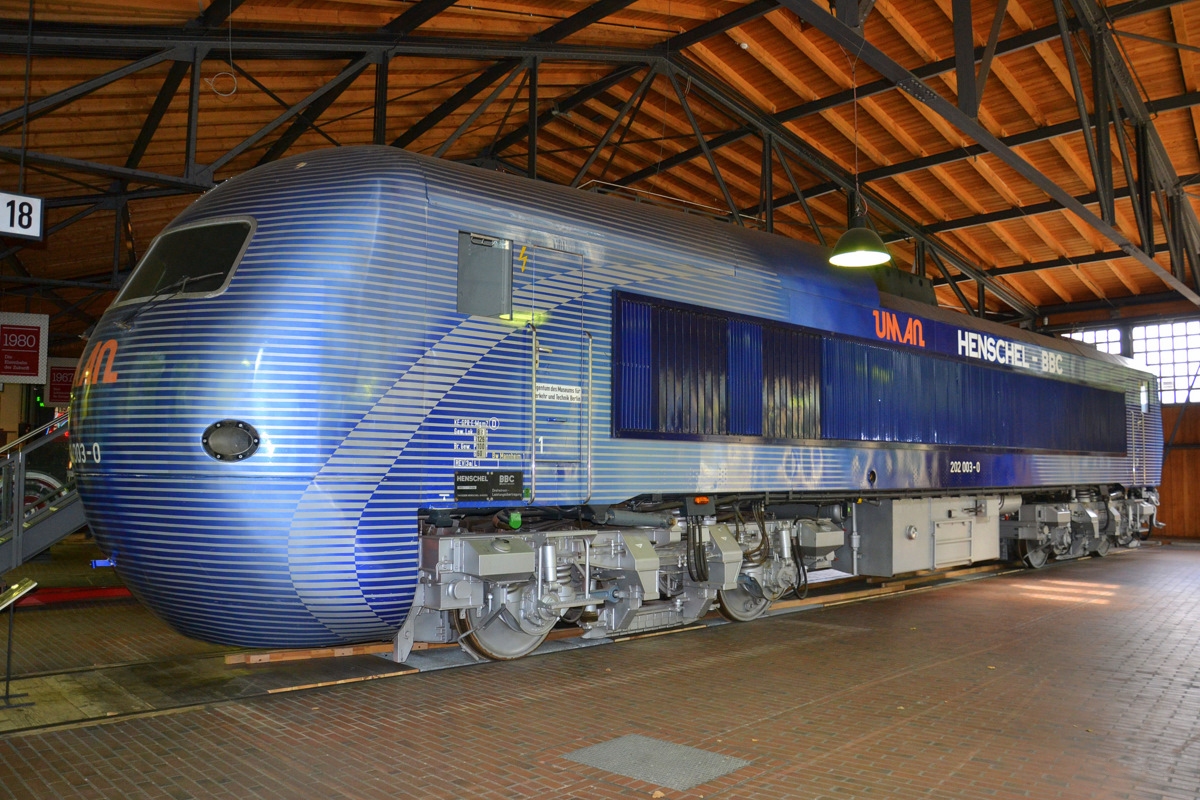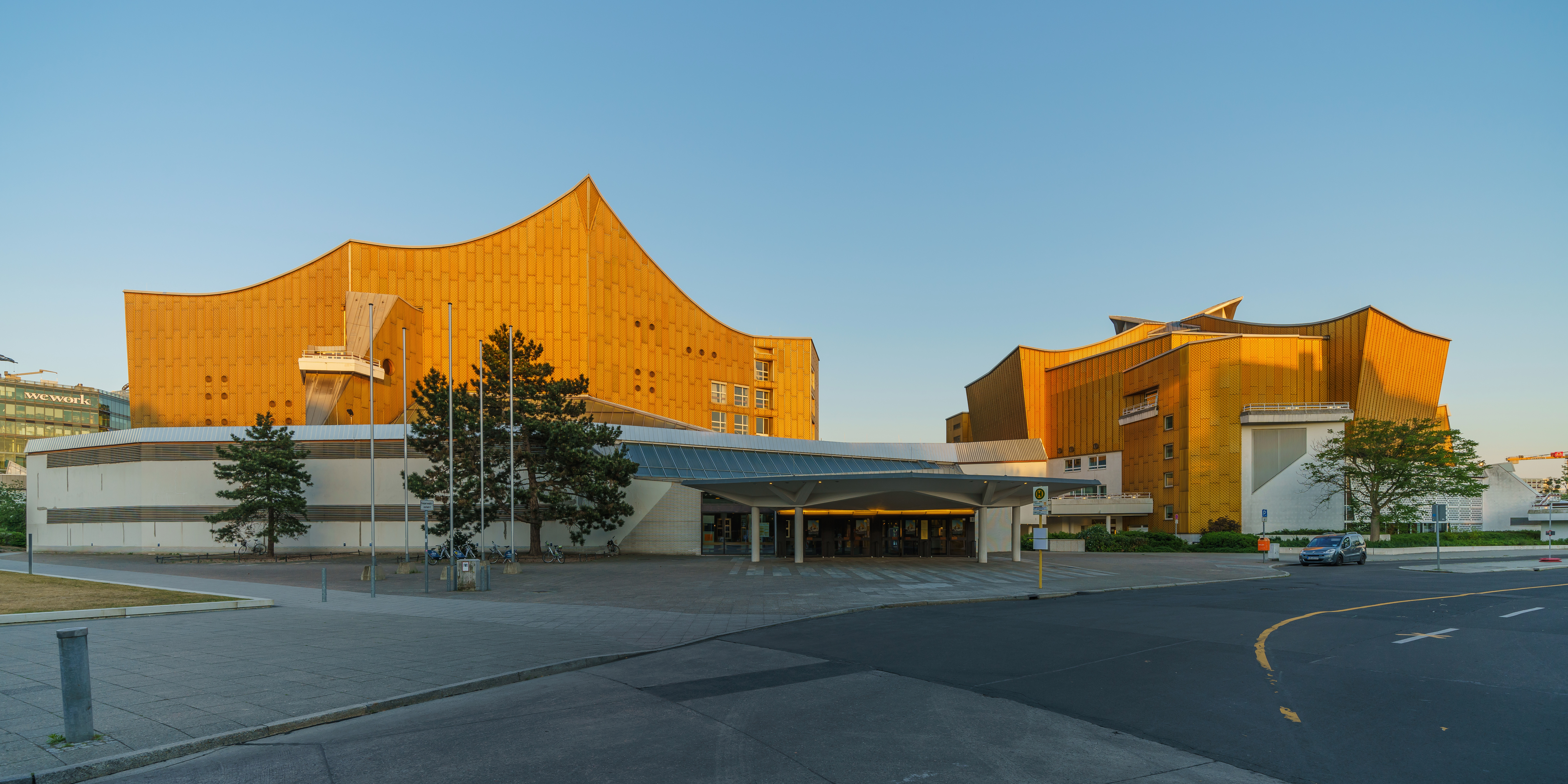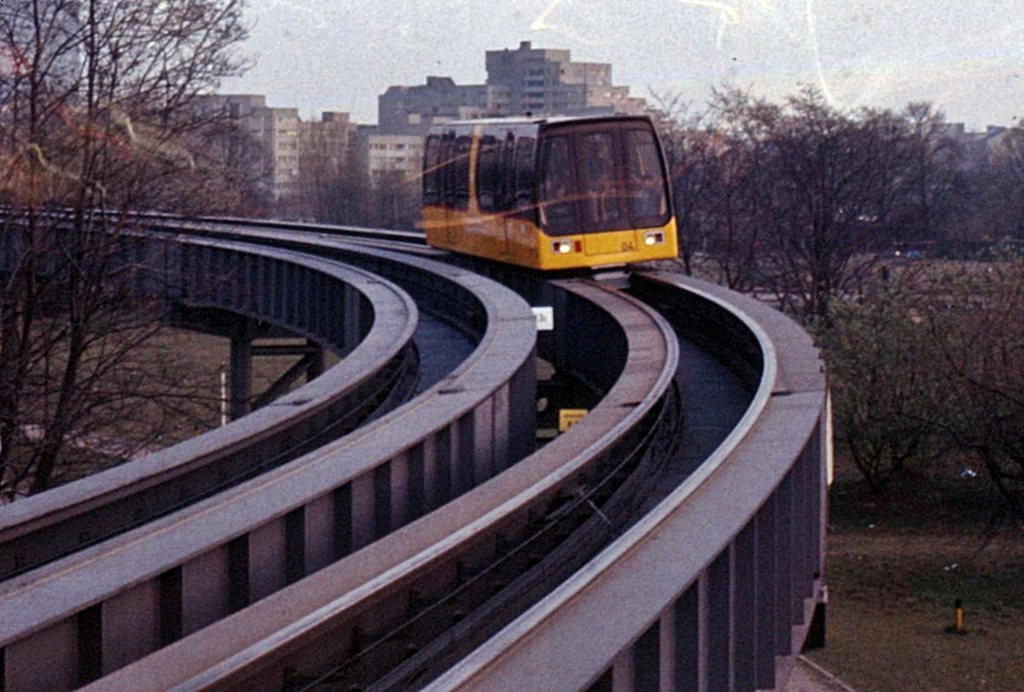|
Gleisdreieck (Berlin U-Bahn)
Gleisdreieck is an elevated Berlin U-Bahn station located on a viaduct in the Kreuzberg district, and served by lines U1, U2, and U3. The U1/ U3 platform is at a higher level than, and perpendicular to, that of the U2. Overview ''Gleisdreieck'' before and after the reconstruction The station's name literally means "railway triangle," or wye in English, and marks the spot of an earlier major train hub that opened in 1902, where the three branches of the first ''Stammstrecke'' U-Bahn line from Zoologischer Garten, Potsdamer Platz and Warschauer Brücke met. A major accident at the triangle happened on 26 September 1908, when two trains collided. One car derailed and fell from the viaduct, killing 18 people and injuring 21. Upon another dangerous incident, the single-level triangle from 1912 was rebuilt and replaced by the current two-level station. Since then there is no direct rail connection between the two lines at Gleisdreieck, but only an intersection. In 1939 the ... [...More Info...] [...Related Items...] OR: [Wikipedia] [Google] [Baidu] |
Kreuzberg
Kreuzberg () is a district of Berlin, Germany. It is part of the Friedrichshain-Kreuzberg borough located south of Mitte. During the Cold War era, it was one of the poorest areas of West Berlin, but since German reunification in 1990 it has become more gentrified and known for its arts scene. The borough is known for its large percentage of immigrants and descendants of immigrants, many of whom are of Turkish ancestry. As of 2006, 31.6% of Kreuzberg's inhabitants did not have German citizenship. Kreuzberg is noted for its diverse cultural life and experimental alternative lifestyles, and is an attractive area for many, however, some parts of the district are still characterized by higher levels of unemployment. The counterculture tradition of Kreuzberg led to a plurality of votes for the Green Party, which is unique among all Berlin boroughs. Geography Layout Kreuzberg is bounded by the river Spree in the east. The Landwehrkanal flows through Kreuzberg from east to ... [...More Info...] [...Related Items...] OR: [Wikipedia] [Google] [Baidu] |
U1 (Berlin U-Bahn) Stations
U1, U.I or U-1 may refer to: Mathematics *U(1), the degree one ''unitary group'' Military *U-1, the USAF and US Military's designation for the De Havilland Canada DHC-3 Otter light transport aircraft *U-1, Soviet designation for Avro 504 trainer. *Multiple German U-boats named ''U-1'' *Oberursel U.I, an early German aircraft engine *HDMS U-1, a Danish submarine * SM U-1, an Austro-Hungarian submarine, lead ship of the U-1 class Entertainment *U1 Technology, a game and software developing company *'' Ultima I: The First Age of Darkness'', a 1981 video game People * U1, alias for Yuvan Shankar Raja (born 1979), a Tamil musician and film composer *U-1, the main character in the video game ''Gitaroo Man'' for the PlayStation 2/PlayStation Portable Railways * LNER Class U1, a 1924 British solitary 2-8-0+0-8-2 Beyer-Garratt locomotive *SR U1 class, a class of 2-6-0 locomotives developed from the U Class U-Bahn lines *U1 (Berlin U-Bahn) *U1 (Frankfurt U-Bahn) *U1 (Hamburg U-Bahn) ... [...More Info...] [...Related Items...] OR: [Wikipedia] [Google] [Baidu] |
1019 4-Gleisdreieck-17
1 (one, unit, unity) is a number representing a single or the only entity. 1 is also a numerical digit and represents a single unit of counting or measurement. For example, a line segment of ''unit length'' is a line segment of length 1. In conventions of sign where zero is considered neither positive nor negative, 1 is the first and smallest positive integer. It is also sometimes considered the first of the infinite sequence of natural numbers, followed by 2, although by other definitions 1 is the second natural number, following 0. The fundamental mathematical property of 1 is to be a multiplicative identity, meaning that any number multiplied by 1 equals the same number. Most if not all properties of 1 can be deduced from this. In advanced mathematics, a multiplicative identity is often denoted 1, even if it is not a number. 1 is by convention not considered a prime number; this was not universally accepted until the mid-20th century. Additionally, 1 is ... [...More Info...] [...Related Items...] OR: [Wikipedia] [Google] [Baidu] |
Berlin-Pankow Station
Berlin-Pankow is a station on the Berlin–Szczecin railway, situated in Berlin's Pankow district. It is served by the S-Bahn lines , and and is the northern terminus of the U-Bahn line . Overview Pankow is a station on Berlin S-Bahn and Berlin U-Bahn networks. The station is served by the following services: Berlin S-Bahn The station opened on 15 October 1880, south of the former Pankow village. It soon was named ''Pankow-Schönhausen'' after the neighbouring Schönhausen Palace. The entrance building was rebuilt in 1911 with the establishment of the suburban railway toward Bernau, which would become the first line of the Berlin S-Bahn on 8 August 1924. The station was renamed ''Berlin-Pankow'' in 1954. With the construction of the marshalling yard Pankow the passenger station was likewise converted received in the course of the work a platform "after kind of the citizens of Berlin light rail stations". Until 1916, the suburban traffic was separated from the long-dista ... [...More Info...] [...Related Items...] OR: [Wikipedia] [Google] [Baidu] |
Urban Park
An urban park or metropolitan park, also known as a municipal park (North America) or a public park, public open space, or municipal gardens ( UK), is a park in cities and other incorporated places that offer recreation and green space to residents of, and visitors to, the municipality. The design, operation, and maintenance is usually done by government agencies, typically on the local level, but may occasionally be contracted out to a park conservancy, "friends of" group, or private sector company. Common features of municipal parks include playgrounds, gardens, hiking, running and fitness trails or paths, bridle paths, sports fields and courts, public restrooms, boat ramps, and/or picnic facilities, depending on the budget and natural features available. Park advocates claim that having parks near urban residents, including within a 10-minute walk, provide multiple benefits. History A park is an area of open space provided for recreational use, usually owned and maintain ... [...More Info...] [...Related Items...] OR: [Wikipedia] [Google] [Baidu] |
Berlin Potsdamer Bahnhof
The Potsdamer Bahnhof is a former railway terminus in Berlin, Germany. It was the first railway station in Berlin, opening in 1838. It was located at Potsdamer Platz, about 1 km south of the Brandenburg Gate, and kick-started the transformation of Potsdamer Platz from an area of quiet villas near the south-east corner of the Tiergarten park into the bustling focal point that it eventually became. For more than a century it was the terminus for long-distance and suburban trains. Also located at this spot were underground stations on the Berlin U-Bahn and S-Bahn, and today's new underground ''Regionalbahnhof'', known as Bahnhof Potsdamer Platz, while the short-lived M-Bahn crossed the site of the former terminus. Early days The Potsdamer Bahnhof was the Berlin terminus of the city's first railway, linking it with Potsdam. Begun in 1835, it was opened from the Potsdam end as far as Zehlendorf on 22 September 1838, and its entire length of 26 km on 29 October. T ... [...More Info...] [...Related Items...] OR: [Wikipedia] [Google] [Baidu] |
Berlin Anhalter Bahnhof
The Anhalter Bahnhof is a former railway terminus in Berlin, Germany, approximately southeast of Potsdamer Platz. Once one of Berlin's most important railway stations, it was severely damaged in World War II, and finally closed for traffic in 1952, when the GDR-owned ''Deutsche Reichsbahn'' rerouted all railway traffic between Berlin and places in the GDR avoiding the West Berlin area. The station's name lives on in the Berlin S-Bahn station of the same name, opened in October 1939 as part of the ''North-South S-Bahn link''. Construction Work to build the Anhalter Bahnhof began on 15 April 1839. As the Berlin terminus, of what become known as the Anhalt Railway, it opened on 1 July 1841 as far as Jüterbog (the inaugural train being hauled by the very first Borsig locomotive), and extended to Dessau, Köthen and beyond at later dates. It became known as the "Anhalt line" because it ran through the historical state of Anhalt, which in turn gave the new Berlin terminus its na ... [...More Info...] [...Related Items...] OR: [Wikipedia] [Google] [Baidu] |
German Museum Of Technology
(German Museum of Technology) in Berlin, Germany is a museum of science and technology, and exhibits a large collection of historical technical artifacts. The museum's main emphasis originally was on rail transport, but today it also features exhibits of various sorts of industrial technology. In 2003, it opened both maritime and aviation exhibition halls in a newly built extension. The museum also contains a science center called Spectrum. History The Museum of Traffic and Technology (') was founded in 1982 and assumed the tradition of the Royal Museum of Traffic and Construction (') which was opened in the former station building in 1906. The present-day museum is located on the former freight yard attached to the in the district of Berlin, including two historic roundhouses and several office buildings. Renamed ' in 1996, the exhibition area was gradually expanded. An adjacent new building complex was inaugurated in 2003, topped by a prominent US Air Force Douglas C-47B ... [...More Info...] [...Related Items...] OR: [Wikipedia] [Google] [Baidu] |
Berliner Philharmonie
The Berliner Philharmonie () is a concert hall in Berlin, Germany, and home to the Berlin Philharmonic Orchestra. The Philharmonie lies on the south edge of the city's Tiergarten and just west of the former Berlin Wall. The Philharmonie is on Herbert-von-Karajan-Straße, named for the orchestra's longest-serving principal conductor. The building forms part of the Kulturforum complex of cultural institutions close to Potsdamer Platz. The Philharmonie consists of two venues, the Grand Hall (''Großer Saal'') with 2,440 seats and the Chamber Music Hall (''Kammermusiksaal'') with 1,180 seats. Though conceived together, the smaller hall was opened in the 1980s, some twenty years after the main building. History Hans Scharoun designed the building, which was constructed over the years 1960–1963. It opened on 15 October 1963 with Herbert von Karajan conducting Beethoven's 9th Symphony. It was built to replace the old Philharmonie, destroyed by British bombers on 30 January 19 ... [...More Info...] [...Related Items...] OR: [Wikipedia] [Google] [Baidu] |
M-Bahn
The M-Bahn or Magnetbahn was an elevated Maglev train line operating in Berlin, Germany, experimentally from 1984 and in passenger operation from 1989 to 1991. The line was in length, and featured three stations, two of which were newly constructed. Presumed to be the future of rail transit in Berlin, the line was built to fill a gap in the West Berlin public transport network created by the construction of the Berlin Wall. It was rendered redundant by the reunification of Berlin and was closed to enable reconstruction of the U2 line. The M-Bahn was the second Maglev line to open to public traffic, after the Birmingham Maglev but before the Shanghai maglev train. Construction and running were undertaken by Magnetbahn GmbH. History The first section of the Berlin U-Bahn to be built included an elevated section between Gleisdreieck and Potsdamer Platz stations. After the partition of Berlin, Gleisdreieck station was in West Berlin whilst Potsdamer Platz station was direct ... [...More Info...] [...Related Items...] OR: [Wikipedia] [Google] [Baidu] |
Berlin Wall
The Berlin Wall (german: Berliner Mauer, ) was a guarded concrete barrier that encircled West Berlin from 1961 to 1989, separating it from East Berlin and East Germany (GDR). Construction of the Berlin Wall was commenced by the government of the GDR on 13 August 1961. It included guard towers placed along large concrete walls, accompanied by a wide area (later known as the "death strip") that contained anti-vehicle trenches, beds of nails and other defenses. The Eastern Bloc portrayed the Wall as protecting its population from fascist elements conspiring to prevent the "will of the people" from building a socialist state in the GDR. The authorities officially referred to the Berlin Wall as the ''Anti-Fascist Protection Rampart'' (german: Antifaschistischer Schutzwall, ). The West Berlin city government sometimes referred to it as the "Wall of Shame", a term coined by mayor Willy Brandt in reference to the Wall's restriction on freedom of movement. Along with the separat ... [...More Info...] [...Related Items...] OR: [Wikipedia] [Google] [Baidu] |








